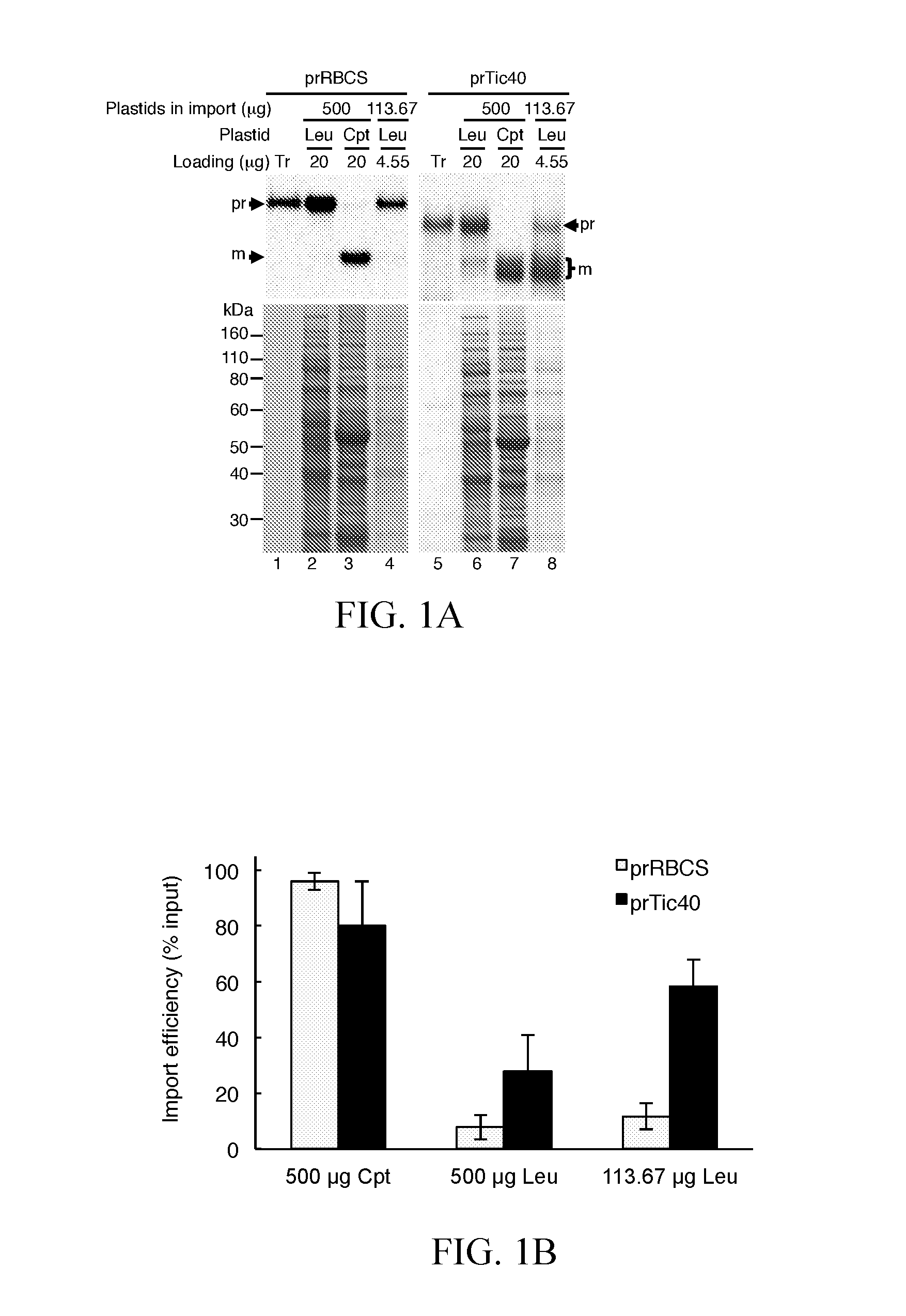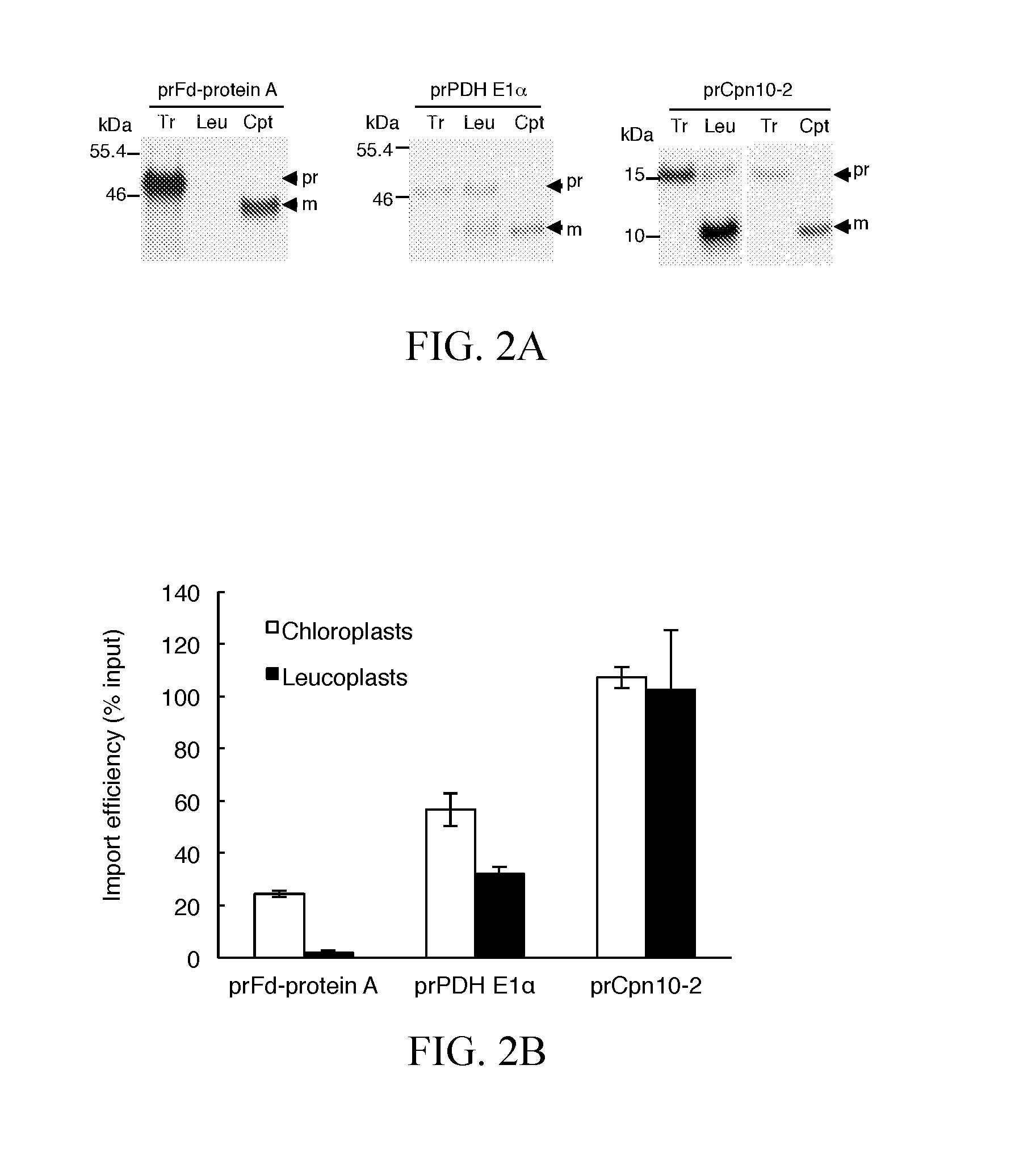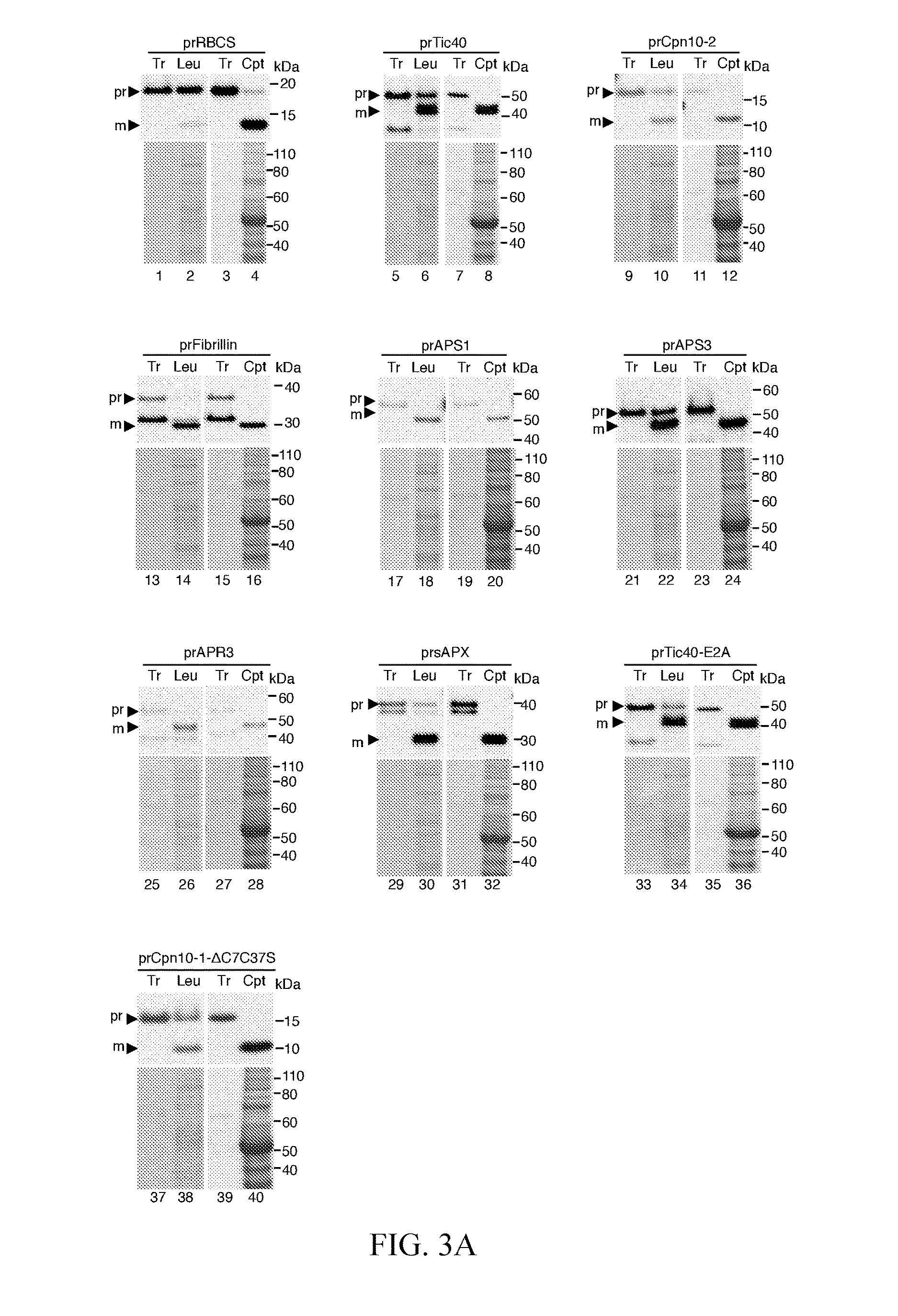Method for high efficiency protein delivery into plastids
a high-efficiency, plastid technology, applied in the field of plant biotechnology, can solve the problems of no transit peptide with high leucoplast import efficiency, and protein imports that could efficiently enter chloroplasts import poorly into leucoplasts
- Summary
- Abstract
- Description
- Claims
- Application Information
AI Technical Summary
Benefits of technology
Problems solved by technology
Method used
Image
Examples
example 1
Plastid Isolation, Protein Concentration Assays, and Plastid Number Counting
[0037]Pea seedlings (Pisum sativum cv. Green Arrow) were grown at 20° C. on vermiculite. Leucoplasts were prepared from roots of 4- to 5-day-old dark grown seedlings as described (Chu and Li, 2015). Chloroplasts were isolated from leaves of 7-day-old seedlings grown under a 12-h photoperiod with a light intensity of approximately 150 μmol m−2 s−1 as described (Perry et al., 1991), except 2 mM ascorbic acid, 0.1 mM dithiothreitol, and 1.2 mM glutathione were added in the grinding buffer used for homogenization. Isolated chloroplasts were adjusted to 1 mg chlorophyll mL−1 in import buffer.
example 2
Optimization of the Protocol for Isolation of Import-Competent Leucoplasts
[0038]To set up a quantitative leucoplast import system, the present invention first optimized the conditions for leucoplast isolation. The present invention increased the concentration of EDTA and BSA in the homogenization buffer and also added reducing agents into the buffer. After these modifications, the import efficiencies of precursor proteins into isolated leucoplasts were increased (Chu and Li, 2015).
example 3
Plasmid Construction and In Vitro Translation of Precursors for In Vitro Import into Isolated Plastids
[0039]Plasmids encoding prRBCS, prTic40, prFd-protein A, prPDH E1α, and prCpn10-2 have been described (Teng et al., 2012). The cDNA clones of pda02149 for precursor of ATP sulfurylase 1 (prAPS1, AT3G22890) and pda04912 for precursor of 5′-adenylylsulfate reductase 3 (APR3, AT4G21990) were obtained from RIKEN BioResource Center (http: / / en.brc.riken.jp). The leaf cDNA pools of Arabidopsis thaliana (Columbia ecotype) were used as templates to amplify the coding regions of Fibrillin 1B precursor (prFibrillin, AT4G22240), ATP sulfurylase 3 precursor (prAPS3, AT4G14680), and stromal ascorbate peroxidase precursor (prsAPX, AT4G08390) with specific forward and reverse primer pairs as described in Table 1. The PCR products of prFibrillin were digested with HindIII and PstI and cloned into the HindIII / PstI of pSP72. The PCR products of prAPS3 and prsAPX were digested with XhoI and SalI and cl...
PUM
| Property | Measurement | Unit |
|---|---|---|
| volume | aaaaa | aaaaa |
| volume | aaaaa | aaaaa |
| size | aaaaa | aaaaa |
Abstract
Description
Claims
Application Information
 Login to View More
Login to View More - R&D
- Intellectual Property
- Life Sciences
- Materials
- Tech Scout
- Unparalleled Data Quality
- Higher Quality Content
- 60% Fewer Hallucinations
Browse by: Latest US Patents, China's latest patents, Technical Efficacy Thesaurus, Application Domain, Technology Topic, Popular Technical Reports.
© 2025 PatSnap. All rights reserved.Legal|Privacy policy|Modern Slavery Act Transparency Statement|Sitemap|About US| Contact US: help@patsnap.com



